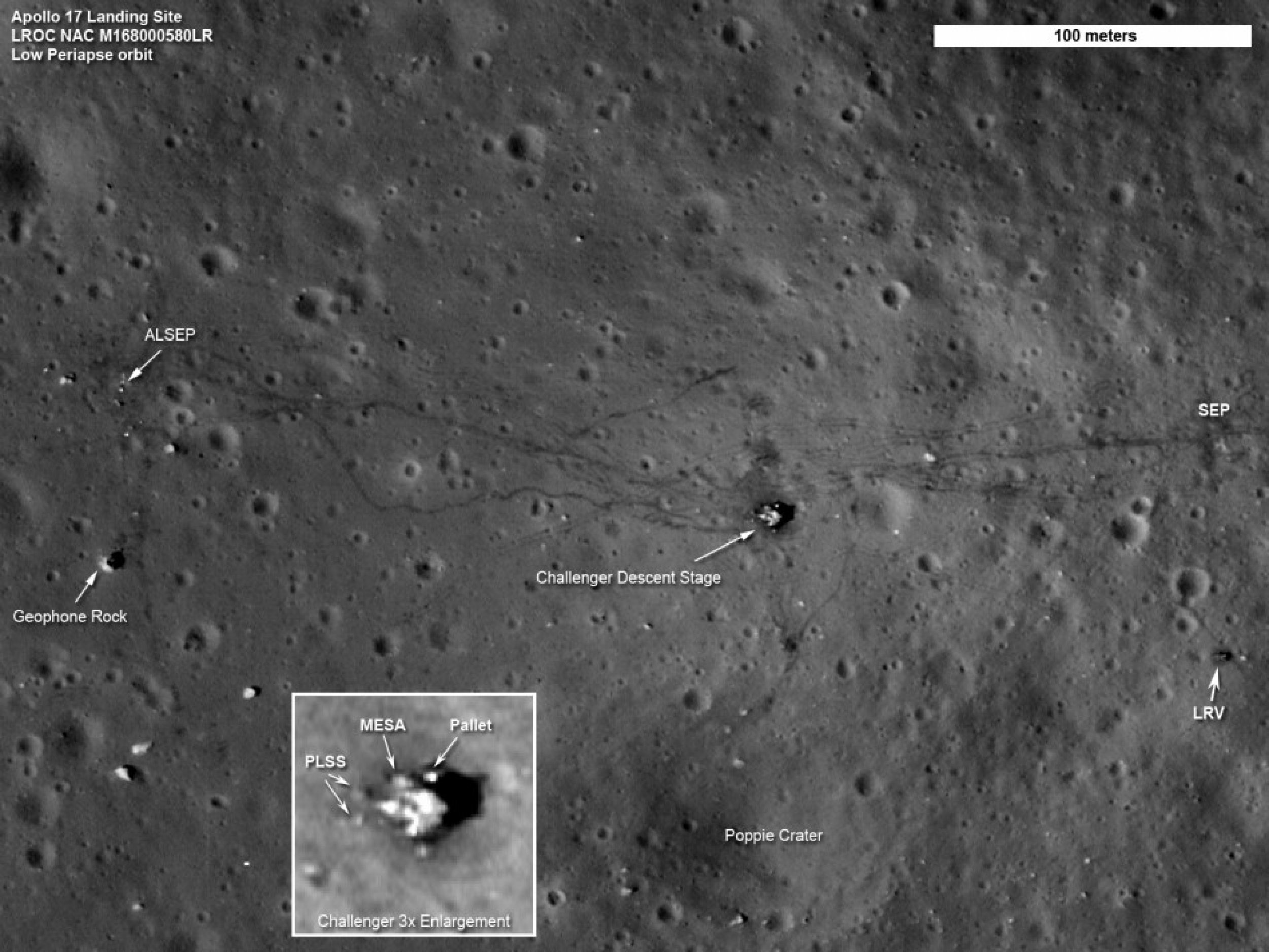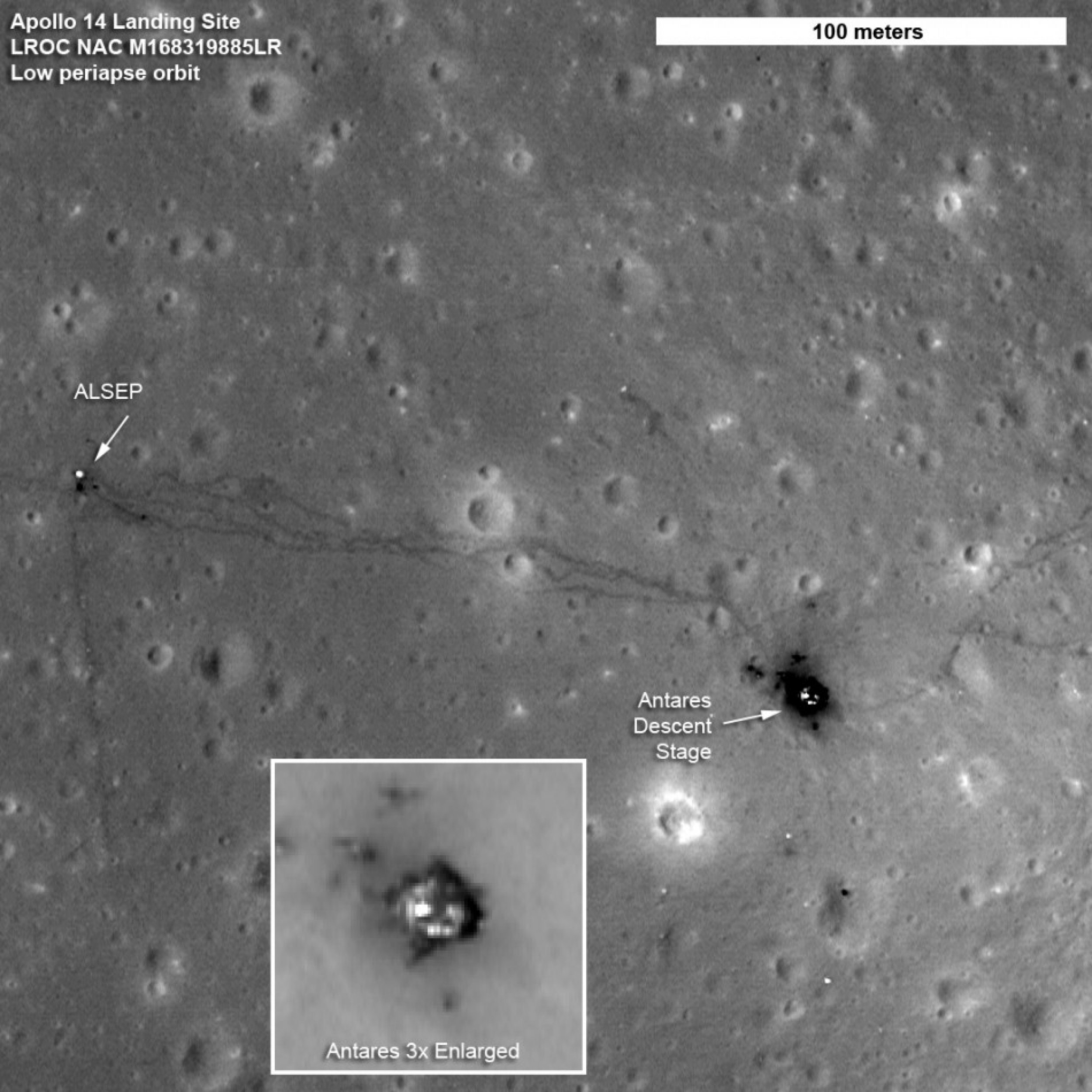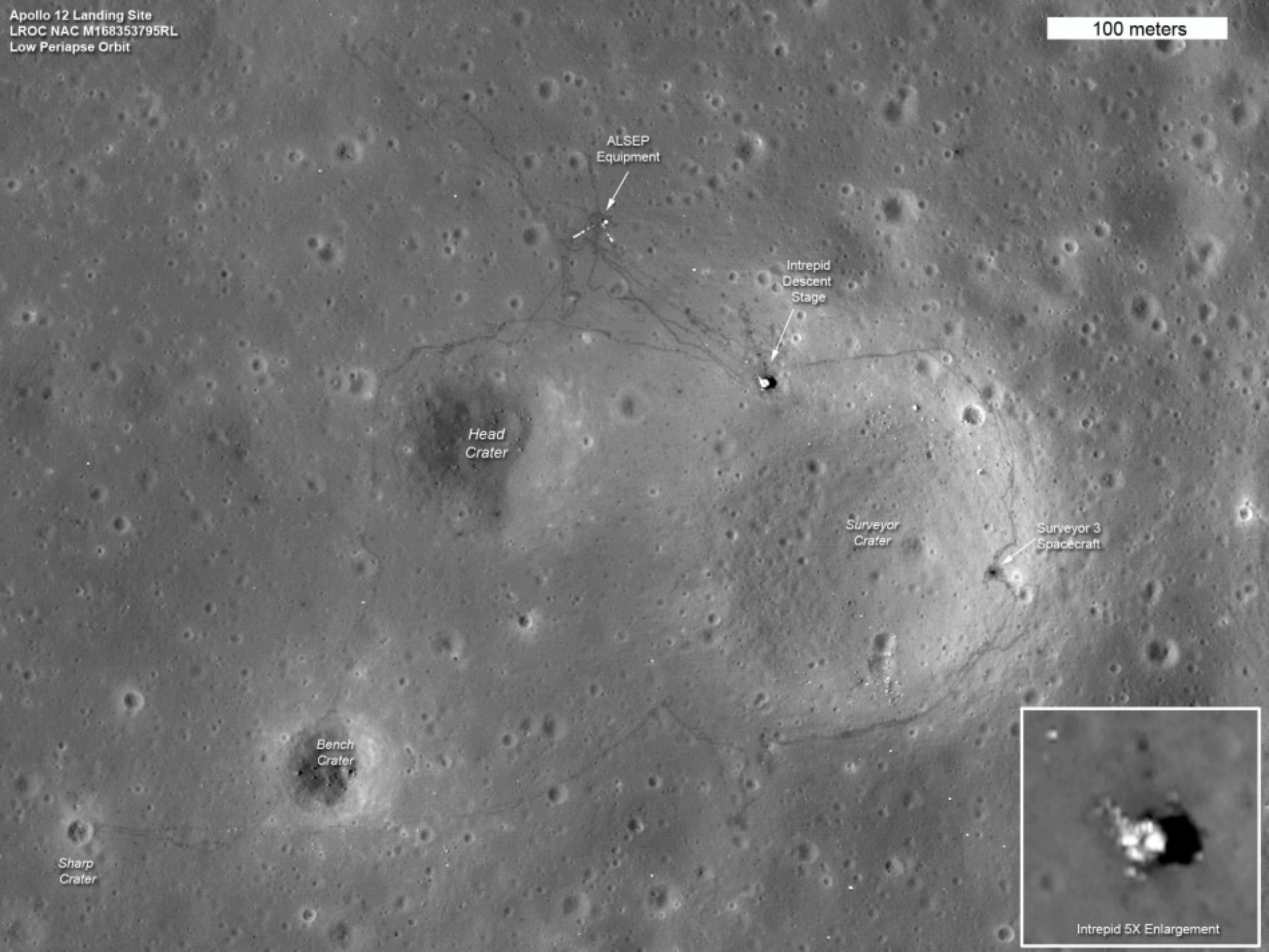Orbiter Images Help NASA Retrace Astronauts’ Paths in Moon (Photos, Video)
NASA has released the sharpest images ever taken from space of the Apollo 12, 14 and 17 landing sites, showing the twists and turns of the paths made when the astronauts explored the lunar surface.
The images show locations where the astronauts placed some of the scientific instruments that provided the first insights into the Moon's internal structure, measurements of the lunar surface pressure and the composition of its atmosphere.
At the Apollo 17 site, the tracks laid down by the lunar rover are clearly visible, along with the last foot trails left on the Moon.
We can retrace the astronauts' steps with greater clarity to see where they took lunar samples, said Noah Petro, a lunar geologist at NASA's Goddard Space Flight Center in Greenbelt, Maryland. Petro is a member of the Lunar Reconnaissance Orbiter (LRO) project science team.
The images show distinct trails left in the Moon's thin soil when the astronauts exited the lunar modules and explored it on foot.
In the Apollo 17 image, the foot trails, including the last path made on the moon by humans, are easily distinguished from the dual tracks left by the lunar rover, which remains parked east of the lander.
The new low-altitude Narrow Angle Camera images sharpen our view of the Moon's surface, said Arizona State University researcher Mark Robinson, principal investigator for the Lunar Reconnaissance Orbiter Camera (LROC).
A great example is the sharpness of the rover tracks at the Apollo 17 site. In previous images the rover tracks were visible, but now they are sharp parallel lines on the surface, he said.
At each site, trails also run to the west of the landers, where the astronauts placed the Apollo Lunar Surface Experiments Package (ALSEP) to monitor the Moon's environment and interior. This equipment was a key part of every Apollo mission.
LRO was built and managed by Goddard. Initial research was funded by the Exploration Systems Mission Directorate at NASA Headquarters.
In September 2010, after a one-year successful exploration mission, the mission turned its attention from exploration objectives to scientific research in NASA's Science Mission Directorate.
Following are the images and videos showing the latest view of the Apollo 17 landing site as seen by NASA's Lunar Reconnaissance Orbiter (LRO).




© Copyright IBTimes 2025. All rights reserved.





















